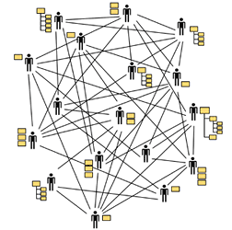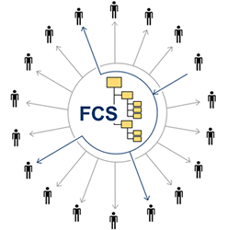|
IV.a. E-mail
|
|||
 |
|||
|
|
|||
| The e-mail
has changed modern communication. To this day, the e-mail is the most
popular Internet application. Nearly 80 % of all European Internet
users use the World Wide Web to send e-mails. The reasons are obvious.
The benefit of sending messages, pictures and documents in a matter of
seconds is immense. However, a look on the negative aspects of this communication method is worthwhile. The attractivity of the e-mail is significantly reduced by the flooding with spam and the snowball-like distribution of computer viruses. They are preferrably sent in masses and account for 40 % of all e-mail traffic. Subsequently, cleansing the e-mail inbox of spam is an annoying daily routine for most e-mail users. Automatic solutions alleviate the effects at best. While it is hard to tackle these profound difficulties, other disadvantages can be avoided by using e-mail correctly. The e-mail is the ideal application for written communication between two persons (one to one). However, it is only suitable to a certain extent for the exchange of information within a group, or from many to many.   Separating discussion threads are inevitable in
group discussions via e-mail. Some contributions refer to a statement
which has been answered by a group member long ago. Other contributions
cannot be matched at all. Due to the separation of individual
contributions in different messages, it is impossible to maintain an
overview of the whole discussion or to keep all contributions in a
chronological order or in context to each other. A simple example: Try
to arrange a meeting with five persons via e-mail.
An emerging problem, above all in projects, is the habit to send information to everyone which might be concerned. The reason for this: It is easy to hand over responsibility, You ought to know. I also sent the message to you. By sending an e-mail the sender is absolved from responsibility. If the message is actually delivered (i.e. read and understood) is the receiver's business. Subsequently, more and more e-mails arrive in the inbox which cannot be designated as spam in a narrower sense but which cannot be handled anymore once a certain amount has been reached and are thus ignored. The original intention, that is to inform the receiver, is not fulfilled anymore. An important part of teamwork is the co-operative work on central documents (reports, articles, tables etc.). On many occasions, e-mail is used for this. Someone develops a draft, fowards it, another person adds something, a third person corrects and some other person comments what he or she comments on is usually unclear at that time. It is nearly impossible to manage the different versions and to ensure that each team member accesses the most current version. Moreover, the sending of documents per e-mail means that each receiver is responsible for storing, organising and saving them. This refers to an amount of work which should not be underestimated and which concerns each team member individually. A central repository could offer effective support (see chapter  IV.b "Internet platforms"). IV.b "Internet platforms").One final remark, e-mails are sent uncoded in most cases which means that they can be read on each server they pass. Transferred to classical mail, the e-mail actually corresponds to postcards and not to letters enclosed in envelopes. The disadvantages of working with e-mails described above bring about a decrease of acceptance in professional usage. In the meantime, the main goal is the reduction of the number of received messages to a bearable amount. The appropriate usage of the instrument e-mail can make a significant contribution.
You can download the complete article here:  "Communication goes Europe - new paths in the web" (PDF, 624kB) "Communication goes Europe - new paths in the web" (PDF, 624kB)
|
|||

